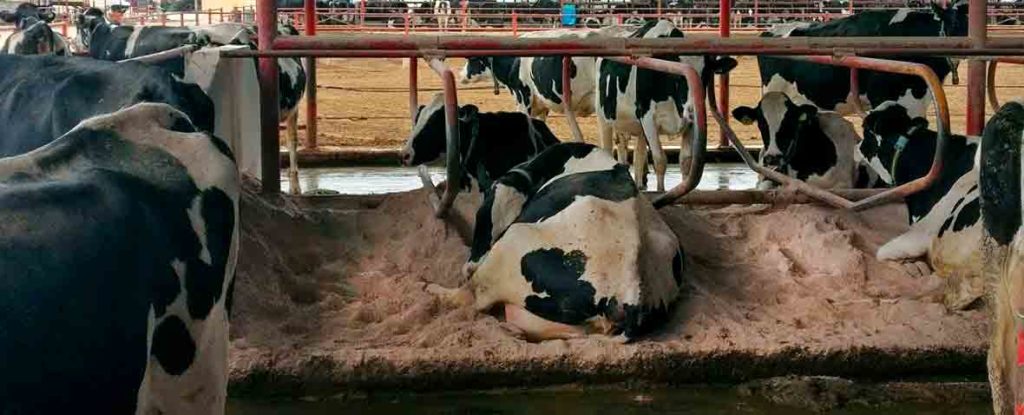Environmental control (II): Bedding materials and its effects on mastitis in dairy cows
When it comes preventing mastitis in dairy cows, it is very important to work with a holistic bovine mastitis control plan. Bedding materials can be divided into two groups. Inorganic or organic. Inorganic materials are sand, lime, calcium carbonate; and organic materials are straw, sawdust, compost etc. Let’s talk about the main benefits of using one or another for preventing mastitis in dairy cows.
Inorganic material allows lower bacterial growth and is preferable for udder health and to prevent mastitis in dairy cows.
Also, in the case of freestalls, these can be divided into those with mattresses and deep bedded freestalls. Deep bedded freestalls provide much better cow comfort than mattresses.
Today we will review the mattresses and also the most important inorganic beeding material.
Mattresses
Some farmers like this system because initially it helps to reduce bedding costs and because they think that it will reduce maintenance work, but this is not completely true. Initial costs are quite high and a mattress system does not mean that neither bedding nor maintenance nor cleanliness are needed.
Without bedding, mattresses get wet and moisture is essential for bacterial growth, and therefore the final costs due to bovine mastitis and production looses can be much higher (see here an online calculator to evaluate the costs of mastitis in dairy cows).
So using small particle bedding such as sawdust or chopped straw helps to keep it dryer, more comfortable and facilitates prevention of mastitis in dairy cows.

Also, lime or calcium carbonate are very useful for reducing moisture on the mattress, and reduce the risk of suffering an increase on somatic cell in milk.
There is no agreement about the amount of calcium carbonate to be added, but between 250- 500 gr/stall daily would be a good recommendation for a standard farm.
On the other hand, some types of mattress could compromise cow comfort as some of them are very hard or become rough or slippery with ageing, promoting hook lesions and lameness. Ideally, we should provide 3-5 cm of bedding material on the mattress to improve cow comfort and avoid wetness.
There are different types of mattress available on the market:
- Solid carpet of rubber: Usually 2-4 cm thick. These are the hardest ones. This type of mattress is very uncomfortable for the cows and will create hoof and joint problems.
- Chopped rubber mattresses: Usually 5-10 cm thick. These provide a better cushion for the cows but with time they also become harder and uncomfortable for the cows.
- Latex or polyethylene foam mattresses: Usually 5-10 cm thick. Good cushion and usually do not become harder with time.
- Water mattresses: This type of mattress is very comfortable for the cows but they have to be really good or a water leak can occur.
Sand
From a bacteriological point of view, sand is the first choice for the reduction of IMI caused by environmental bacteria.
As an inorganic material, it does not support the growth of environmental bacteria and it usually has lower bacterial counts than organic materials, so teat exposure is lower, as is the risk of mastitis in dairy cows. However, we must consider availability and price.
Also, it needs special manure handling systems which tend to be expensive. When new facilities are planned, arrangements can be made for the use of sand, but to use sand on a farm which is not prepared for this can be a huge problem.
It is also possible to recycle the sand to reduce bedding costs. Some farmers leave used sand in a pile for a few months and organic matter from manure is composted and reduced. Others, in larger units, prefer to wash the sand. In both cases, the goal is to obtain sand with less than 2% of organic matter.
Some types of fine sand become harder when in the freestall because of the weight of the cow. In this case, it is important to till it once a day or every two days, to achieve a correct protective effect against mastitis in dairy cows.
This is also important in order to avoid small piles of sand between freestalls. With this operation we have a better use of the sand and the comfort of the freestall is improved.
Content originally created for “the Mastipedia”.
Authors: Oriol Franquesa and Demetrio Herrera (Udder health and milk quality consultants).



